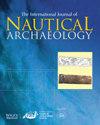古代世界的考古与经济:希腊的经济与海洋文化景观
IF 0.6
3区 历史学
0 ARCHAEOLOGY
International Journal of Nautical Archaeology
Pub Date : 2023-01-02
DOI:10.1080/10572414.2022.2159185
引用次数: 1
摘要
翻译,聘请了七名不同背景的翻译人员,他们都是专业翻译人员和(海事)考古学家。这通常导致在技术语言中使用不同的术语。此外,某些地理术语保留在荷兰语中,而在其他章节中使用了英语术语,不同章节中使用的是英国英语和美国英语之间的变体。然而,这不应被视为阅读这一庞大作品的障碍,也绝对不应削弱作者和编辑的巨大质量工作。序言中正确地提到,维列曼“为检查、测量、描述和展示齿轮和其他沉船设置了一个新的标准”(第18页)。由于时间和/或资金的限制,在现代考古政策和实践的框架内对一艘或多艘船只进行此类完整研究和重建的高标准往往很难实现。因此,维列曼及其毕生的工作值得赞扬。需要特别提到的是Hemmy U形夹,他在2022年底U形夹去世前意识到Vlierman的手稿已经出版。综上所述:我建议你购买这件作品,并将双倍体积(10公斤重)的豪华盒子放在办公桌附近,因为这对所有沉船爱好者来说都是一件有用的标准作品。本文章由计算机程序翻译,如有差异,请以英文原文为准。
Archaeology and Economy in the Ancient World: Economy and the Maritime Cultural Landscape of Greece
translation, seven translators with different backgrounds, both professional translators and (maritime) archaeologists, were hired. This often resulted in the use of different terminologies within the technical language. Also certain geographical terms are left in Dutch while in other chapters the English term was used, and variations between British and American English were used throughout the different chapters. This however should not be seen as an obstacle to read this immense body of work and should definitely not diminish the enormous qualitative work of both the author and the editors. In the preface it is rightly mentioned that Vlierman has ‘set a new standard for examining, measuring, describing and presenting cogs and other shipwrecks’ (p. 18). Such a high standard in this type of complete study and reconstruction of one or more ships in the framework of modern archaeological policies and practices is often very difficult to achieve due to the limitation of time and/or funding. Therefore, Vlierman and his life’s work are to be commended. A special note should be mentioned for Hemmy Clevis, who realised the publication of Vlierman’s manuscript before Clevis’ passing in late 2022. To sum up: I recommend you purchase this work and put the double-volume (10 kg heavy) luxury box near your desk, as it is a useful standard work for all shipwreck enthusiasts.
求助全文
通过发布文献求助,成功后即可免费获取论文全文。
去求助
来源期刊

International Journal of Nautical Archaeology
ARCHAEOLOGY-
CiteScore
1.40
自引率
20.00%
发文量
30
期刊介绍:
The International Journal of Nautical Archaeology is a forum for the exchange of ideas and research relevant to all aspects of nautical and maritime archaeology. Published twice a year in print and online, each issue of 224 pages contains peer-reviewed original articles, notes and book reviews. IJNA addresses the theory and practice of archaeology and related academic disciplines which investigate human associations with water and waterborne craft of all periods throughout the world, on seas and inland waters. Aiming to encourage a fuller understanding of the maritime past within its wider context, IJNA keeps readers abreast of the latest discoveries, new interpretations and theoretical approaches.
 求助内容:
求助内容: 应助结果提醒方式:
应助结果提醒方式:


